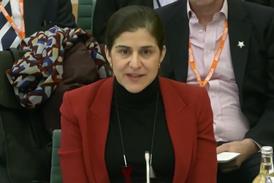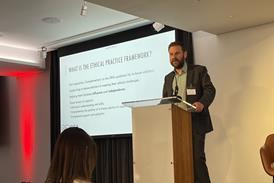With the Civil Justice Council’s consultation on its review of litigation funding now closed, and with a final report promised by the summer, the CJC has a huge task to undertake over the next few months. Its review is wide-ranging, with no recommendations in the interim report published alongside the consultation, and with evidence sought on funding options. These range from conditional fee agreements and damages-based agreements, through to portfolio funding and crowdfunding, to legal expenses insurance. Third-party funding (TPF), however, is at the centre of the review, with expectations that the CJC’s recommendations will shape the future of a sector under increasing scrutiny.

On the face of it, Lord Justice Jackson and Sir Alan Bates have little in common but, looked at in the context of litigation funding, their work can be seen as bookending the development of TPF – financial support by commercial organisations in return for a share of the damages.
At the time of the Review of Civil Litigation Costs: Final Report in 2009, Lord Justice Jackson was supportive of the nascent TPF market, taking the view that it promoted access to justice. He argued that, despite the cost, it was better for prospective claimants to receive a proportion of their damages rather than nothing at all. At that stage, he took the view that adequate regulation could be provided by a ‘satisfactory voluntary code, to which all litigation funders subscribe’. With the support of the CJC, and through the creation of the Association of Litigation Funders (ALF) and its Code of Conduct in 2011, that voluntary regime was put in place.
ITV’s 2024 drama Mr Bates vs The Post Office (pictured) highlighted how TPF can work in practice. On the one hand, the postmaster litigants were only able to bring proceedings against the Post Office with external financial support, enabling them to reach a £57.75m settlement; on the other hand, the fact that more than 75% of their damages award was paid to the third-party funders raised concerns that under the current regime funded parties are insufficiently recompensed.
The question of whether to further regulate the sector and, if so, to what degree, is at the centre of the CJC review. It is a question also being asked in other jurisdictions. In its 2024 report Principles Governing the Third Party Funding of Litigation, the European Law Institute (ELI) recognises the dilemma: while increased regulation may deliver greater protection to users of TPF, ‘regulation which affects the risk/reward balance for funders may well simply lead to funders ceasing to offer funding in the regulated territory’, leading to ‘serious access to justice issues’. It highlights the need for balance.
The ALF’s voluntary Code of Conduct does provide some protections, including duties of confidentiality and provisions which govern capital adequacy, control of the litigation, settlement and termination of the agreement. However, the creation of the ALF has failed to deliver on Lord Justice Jackson’s recommendation that all litigation funders should sign up. Of the 44 funders operating in England and Wales, only a minority are ALF members. Critics of the voluntary regime also note its light-touch approach and lack of teeth, with a maximum financial penalty of £500 if a complaint is upheld.
The CJC’s consultation raises several TPF issues on which it wishes to gather evidence. It recognises that litigation funding is used in a diverse range of claims, from international arbitration, through collective proceedings in the Competition Appeal Tribunal, personal injury and consumer claims, to matrimonial disputes. Should the same regulatory regime apply to all types of claim or are different approaches required? Should consumers, individuals and SMEs receive greater protection?

If it is accepted that TPF promotes access to justice, this must apply to all parties. From the claimant viewpoint, should a funder’s return be capped? The question raises the same issue highlighted by the ELI: would a cap allowing claimants to keep more of their damages deter funders from supporting meritorious claims?
From the defendant viewpoint, should funders be exposed to adverse costs orders? Although the Court of Appeal, in Arkin v Borchard Lines Ltd (2005), limited a funder’s liability by reference to the level of funding provided, courts since then have been more willing to expose funders to full adverse costs, especially where the funder can expect to receive a significant proportion of the damages if the claim is successful. While Lord Justice Jackson believed TPF filtered out unmeritorious claims, thereby benefiting opposing parties, does that still hold true? Or does TPF encourage litigation which is vexatious or without merit?
Looking at the practicalities, if greater regulation is desirable, how should that be achieved? In presenting the draft voluntary code which eventually became the ALF Code of Conduct, the CJC reported that at that time no established regulator wished to extend its remit to take on the emerging TPF market. The current review asks what role the court rules and the courts themselves should have in controlling third-party-funded litigation.
With much to consider, it is for the CJC to find the balance: sufficient regulatory oversight (particularly for the most vulnerable) to deliver access to justice at proportionate cost while preserving the litigation funding market. A tough call.
Howard Dean is president of the Forum of Insurance Lawyers (FOIL) and a partner at Keoghs. Shirley Denyer is a FOIL technical consultant































No comments yet